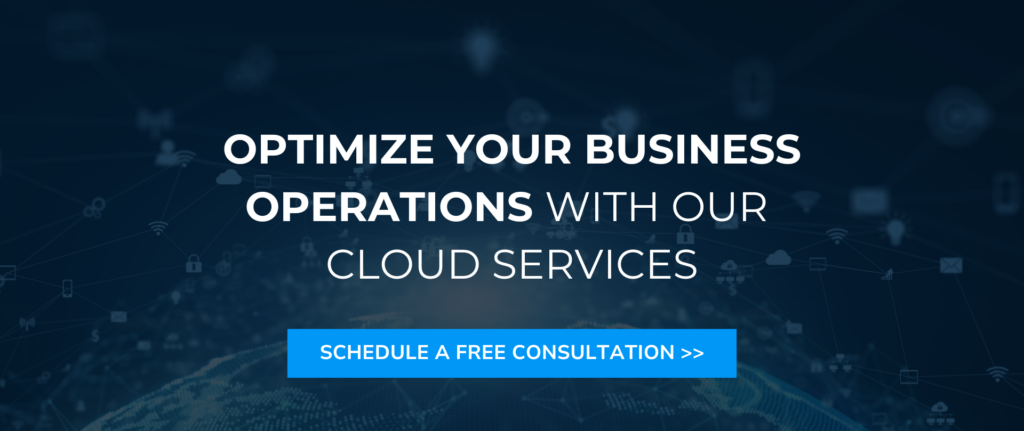Modernization of the accounting system using AWS cloud for datarabbit

About the Client
datarabbit is an expert in data analytics and artificial intelligence. The company specializes in transforming data into actionable insights that support business decision-making. Through its innovative solutions, datarabbit helps clients improve operational efficiency and gain a competitive edge.
The challenge
datarabbit faced the challenge of modernizing and migrating its accounting system, which supported the company’s operations and data analysis. This system was essential for the daily functioning of the organization, and its reliability and performance had a direct impact on the efficiency of business processes.
The challenges encountered during the execution of this project included:
- Modernization of the existing on-premises Infrastructure
- Improvement of scalability
- Achieving high availability and reliability of the application
- Improvement of data security
Project objectives
The main objectives of the project were:
- Migrating the system from on-premises infrastructure to the AWS cloud platform,
- Increasing the availability and reliability of the system,
- Ensuring better scalability in the context of the company’s future growth,
- Streamlining deployment processes and the entire software development lifecycle (SDLC).
The system prior to modernization consisted of:
- Backend services written in Python,
- A web frontend supported by Nginx.
- Docker containers for application management,
- A PostgreSQL database for data management.

Our solution
To address the challenges posed by the existing infrastructure and the need for enhanced availability, scalability, and reliability of the accounting system, we proposed migrating the system to the AWS cloud. This migration enabled the implementation of several key initiatives that significantly improved the application’s functionality and performance.
- Migration to AWS Cloud
- CI/CD process optimization
- Containerization and application management
- Database optimization
Benefits for the Client
By migrating the accounting system to the AWS platform, Data Rabbit gained a range of benefits. The most significant of these include:
- Increased availability and reliability of the system
Migrating to the AWS cloud ensured high availability of the accounting system, minimizing the risk of failures and downtime. AWS, with its architecture, offers built-in redundancy and failover mechanisms that ensure continuous operation of the application, which is crucial for systems supporting accounting operations. The high availability of the system also meant no downtime in daily business processes, fostering greater trust in the stability of the entire organization. - Scalability and flexibility of resources
Thanks to the migration to AWS, datarabbit gained the ability to easily scale resources according to changing needs. As the company grows and the demand for computing power and storage space increases, the system can be flexibly adjusted to meet new requirements without the need for investing in costly on-premises infrastructure. This allowed the company to save time and resources while also reacting faster to changing market conditions. - Optimized development processes (CI/CD)
Automation of Continuous Integration/Continuous Deployment (CI/CD) processes directly impacted the efficiency of development teams. By reducing the time needed to deploy new features and fixes, the company was able to deliver business value more quickly. Automated testing and flawless deployments reduced the risk of introducing errors and made system updates easier to manage. - Reduced operational costs
Moving to the cloud allowed the company to lower costs associated with maintaining IT infrastructure. Previously, the need to purchase, maintain, and upgrade on-premises hardware came with significant expenses. With AWS, the company only pays for the resources it actually uses, which helped optimize operational costs and enabled more precise expense planning. - Enhanced data security
Securing accounting and financial data is crucial for any organization. With the migration to AWS, datarabbit benefited from advanced data protection solutions, such as encryption, real-time monitoring, and multi-level authentication. These measures gave the company confidence that its data was secure and protected from external threats. - Better handling of growing numbers of users and data
The system modernization allowed for improved handling of a growing number of users and data. With enhanced scalability, the company can now manage larger volumes of data and transactions without worrying about performance degradation. This has enabled the company to grow smoothly and maintain high service quality, even with the increasing number of operations. - Faster response to market changes
Thanks to the flexibility of the cloud and optimized development processes, datarabbit is now able to respond more quickly to changing market demands. Faster deployment of new features and fixes allows for better alignment of the system with customer requirements and facilitates faster innovation within the organization.
Tools and services used
- Amazon Web Services (AWS)
AWS was the core cloud platform on which the modern accounting system was built.
AWS Services Used:
- Amazon ECS (Elastic Container Service) and Amazon Load Balancer: ECS allows for the management of application containers, enabling their easy deployment, scaling, and management in the cloud. Combined with Amazon Load Balancer, which evenly distributes traffic among the containers, this ensures high availability and performance of the application. The Load Balancer monitors the health of ECS containers, directing traffic only to those that are active and healthy, optimizing the overall system’s performance and reliability.
- Amazon RDS (Relational Database Service): Used to host the PostgreSQL database in the cloud. RDS allowed for easy database management, automatic backups, and ensured high availability.
- Amazon S3 (Simple Storage Service): S3 was used for secure and scalable data storage, offering easy access and backup capabilities.
- Amazon CloudWatch: Used for monitoring the performance of the application and cloud infrastructure, enabling real-time tracking of system status and prompt response to any issues.
- Amazon CloudFront: Used as a global content delivery network (CDN) to accelerate application loading times and ensure low latency in data access.
- Docker
Containerization of the application using Docker technology enabled easy environment management.
The accounting application was packaged into containers, allowing for seamless deployment in the AWS cloud. This approach also facilitated scalability and simplified the management of both production and testing environments.
- PostgreSQL
- Terraform
Terraform was used for infrastructure management as code (IaC). With Terraform, the entire AWS cloud infrastructure was defined as code, enabling easy resource management, automation of deployments, and tight control over the production environment.

